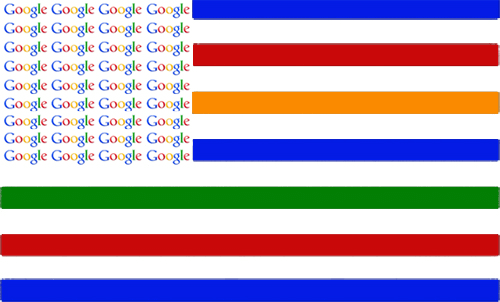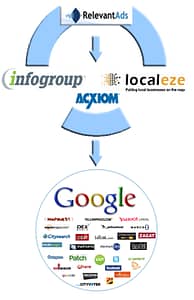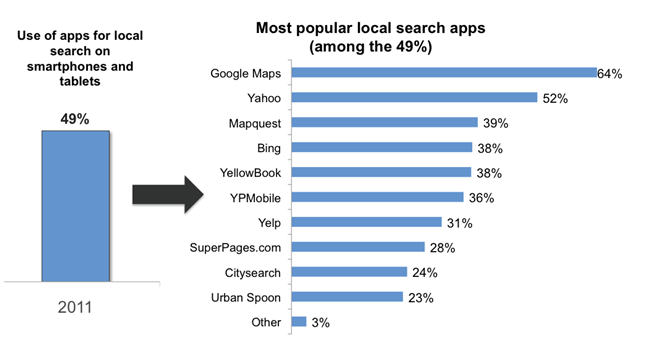Foursquare has grown substantially, since its inception in 2009. Designers and developers have continually enhanced the mobile app features to provide a better user experience.
Below are just a few of the changes that have affected local SEO strategies in regards to Foursquare:
1. Included an Interactive map and adding more search categories
2. Introduced a new rating system for venues
3. Introduced “Foursquare for Business” app
7. Included larger, highlighted location photos
8. Added more recommendations to the Explore tab
9. Introduced the suggested nearby places map
10. Has an algorithm that not only considers what is nearby, but what is similar to what you have already searched.
The above indicate that Foursquare is gradually moving away from its original focus on gamification, and is looking to improve search and recommendation features with their app.
Foursquare considered reasons people use their mobile app. Even though every feature adds to a more enhanced user experience, there is a progression that most users take when moving through the site.
Foursquare wanted to provide a more direct way to navigate to the areas that are most popular with their users. Users don’t usually want to see random places their friends have visited, but specific, local places. Therefore, exploring nearby places should be the focus.
Foursquare introduced another change Wednesday, April 10th to iOs. It made the “Explore Nearby” search area the first thing you see on the home screen, rather than your friend’s check-ins, when you log on.
Android users have a similar home screen look, but there are still some differences (e.g., the suggested text in search bar) between what Android users see and what iOS users see. One can compare home screens for Android (left) vs. iOS (right) by viewing the two screenshots below:
What do these changes mean for the local search professionals?
Foursquare can now compete on a level with Google Plus Local and Yelp. Relying heavily on check-ins was not the best route to go when shifting to more of a local search focus, similar to their competitors.
Now, recommendations based on current time and location are presented even before reaching the check-in button. Businesses have a better chance of catching a potential customer’s eye.
Foursquare has been on many local search professionals’ radar. With the most recent change, though, Foursquare is positioned to become even more important to local SEO’s. It is time to think about optimizing businesses so they can become one of the “trending” or “suggested” businesses for a particular area on Foursquare.
The Explore feature, in itself, isn’t new, but placing it at the forefront means local search gurus will want to incorporate it within their local search strategies. Below are some recommended articles and/or posts for exploring this topic further:
1. 10 Reasons To Use Foursquare Explore For Personalized Local Searches
2. Is Foursquare the Latest Dark Horse in the Local Search Race?
3. Foursquare Explore: Search, Social, and the Real World








